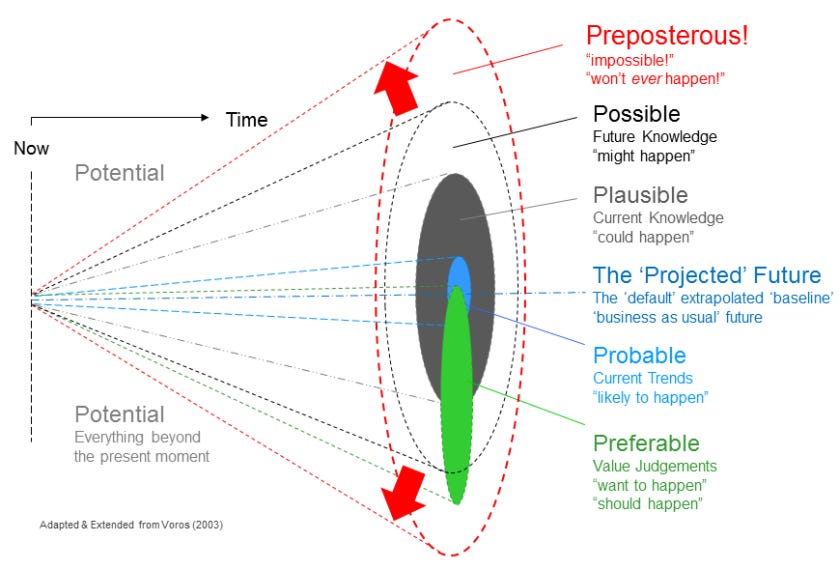Work: As a Stultifying Waste of Time
Future, the: Pessimism Regarding; Cone Model of
Reservations Recommended, Chapter 4
He still hopes that she’ll tire of business and drift back to him. God knows he gets tired enough of business himself. There are days when he sits at his desk and feels encased by work, as if it were a transparent wrapper, something too tough for him to break, like the stubborn vinyl packaging on the compact discs he buys. It isn’t only business that has him wrapped up, though, he realizes; it’s the whole set of his habits, his ways of thinking about himself and about what seems to him to be the narrowing cone of his future, fewer possibilities every day.
Rampion in Aldous Huxley’s Point Counter Point:
Your work’s just a nasty, dirty job, made unfortunately necessary by the folly of your ancestors. They piled up a mountain of garbage and you’ve got to go on digging it away, for fear it might stink you to death, dig for dear life, while cursing the memory of the maniacs who made all the dirty work for you to do. But don’t try to cheer yourself up by pretending the nasty mechanical job is a noble one. It isn’t; and the only result of saying and believing that it is will be to lower your humanity to the level of the dirty work. If you believe in business as service and the sanctity of labor, you’ll merely turn yourself into a mechanical idiot for twenty-four hours out of the twenty-four. Admit that it’s dirty, hold your nose, and do it for eight hours, and then concentrate on being a real human being in your leisure.
Joseph Voros, “The Futures Cone, use and history”:
Futurists have often spoken and continue to speak of three main classes of futures: possible, probable, and preferable (e.g., Amara 1974, 1981; Bell 1997, and many others). […]
It is convenient to depict this expanded taxonomy of alternative futures as a ‘cone’ diagram. The ‘futures cone’ model was used to portray alternative futures by Hancock and Bezold (1994), and was itself based on a taxonomy of futures by Henchey (1978), wherein four main classes of future were discussed (possible, plausible, probable, preferable). […]
Over the years that I have been using the Futures Cone in foresight teaching and practice, I have found it useful to adapt it and add more classes to the initial few. The most recent version of the Futures Cone as I now use it is as depicted in the figure shown.
See also:
Work, Labor TG 5; Endless Tasks TG 86; Tasks, Sisyphean TG 89; Day Jobs; Working at Cross-Purposes TG 120; Educational Publishing TG 111; Work versus Play TG 367
Future, the: Expectations for TG 458
Have you missed an episode or two or several?
You can begin reading at the beginning or you can catch up by visiting the archive or consulting the index to the Topical Guide.
You can listen to the episodes on the Personal History podcast. Begin at the beginning or scroll through the episodes to find what you’ve missed.
You can listen to “My Mother Takes a Tumble” complete and uninterrupted as an audiobook through YouTube.
You can ensure that you never miss a future issue by getting a free subscription. (You can help support the work by choosing a paid subscription instead.)
At Apple Books you can download free eBooks of Little Follies and Herb ’n’ Lorna.
You’ll find overviews of the entire work in An Introduction to The Personal History, Adventures, Experiences & Observations of Peter Leroy (a pdf document) and at Encyclopedia.com.



